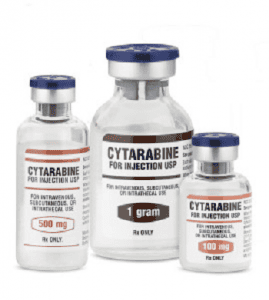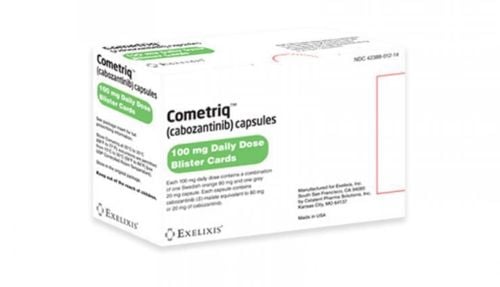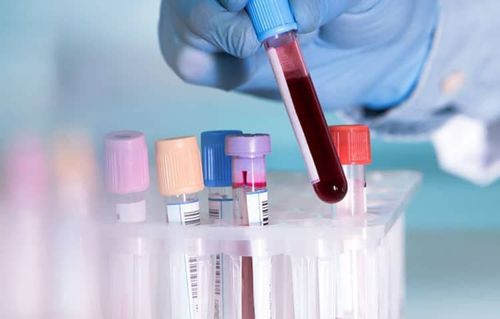This is an automatically translated article.
Vincran is a prescription drug, anti-cancer, acting on the immune system, containing the main ingredient is Vincristine sulfate, 1mg content, 1ml injection solution. The drug is used in acute leukemia, in Hodgkin's disease, some types of cancer such as cervical cancer, breast cancer... To use the drug most effectively, you need to know the information about its use, Notes and possible side effects when using Vincran.1. What is Vincran?
Vincran is used to treat cancer because it contains vincristine, a drug originating from Korea. The amber vial contains a transparent solution of Vincran, from colorless to light yellow. Vincristine is an antineoplastic agent extracted from periwinkle, which acts on cell division by interfering with tubular microstructural proteins, causing the cessation of cell division during meiosis. At high doses, the drug can inhibit nucleic acid synthesis and protein synthesis. The mechanism of action of the drug is not yet known in detail, this is a strong inhibitor of cells. Vincristine binds specifically to tubulin, a microtubule protein, blocking the formation of the mitotic spindles required for cell division. Resistance may develop during treatment, and cross-resistance also frequently occurs between the drugs Vincristin and Vinblastin, but this cross-resistance is often incomplete. After injection, Vincran rapidly distributes into body tissues and binds to already formed blood factors, especially red blood cells and platelets. The drug does not penetrate the central nervous system to a significant extent. Vincristine is extensively metabolised in the liver. The main route of elimination is via bile to faeces.1⁄3 doses of the drug can be recovered in the faeces within the first 1 day and 2⁄3 within 3 days. Only 12% of the dose is excreted by the kidneys. Approximately 1⁄2 of the dose is recovered in the faeces and urine as metabolites. The drug has a long half-life and a high retention time, so it is not necessary to transmit the drug for a long time.2. Indications and contraindications of Vincran
Vincran drug is used in the following pathologies:
Treatment in patients with blood cancer, also known as acute leukemia. Combination drugs in Hodgkin's disease and non-Hodgkin's lymphoma. Treatment of neuroblastoma, breast cancer, cervical cancer, Wilms tumor. Vincran should not be used in the following cases:
Patients with hypersensitivity to Vincristine, other excipients in the drug. The patient showed signs of demyelination due to Charcot-Marie-Tooth syndrome. 3. Dosage and how to use Vincran How to use:
Vincran is administered intravenously. The injection of the vial should be completed in about 1 minute. Do not add any other solution to the vial before use. Take the drug solution into a suitable dry syringe, and measure the dose carefully because the dose of the drug is related to neurotoxicity. Dosage:
Doses are given 1 week apart.
Adults: Injection dose of 1.4mg/m2. Children: The injection dose is 2mg/m2. Children weighing less than 10kg: The dose is calculated according to the formula 0.05mg/kg. People with liver failure with blood bilirubin > 3mg / 100mL: The dose of the drug is reduced to 50%. If the patient has central nervous system Leukemia, the patient needs to be used in combination with other drugs to improve the treatment effect, because Vincran drug crosses the blood-brain barrier at low concentrations. Drug overdose:
The dose of the drug needs to be calculated very carefully because the symptoms of drug overdose are very serious and can be fatal for the user.
In children under 13 years of age, the dose can be fatal at doses up to 10 times the recommended dose. Adults may experience severe overdose symptoms from doses of 3 mg/m2 or higher.
Treatment when patients overdose Vincran, need supportive treatment of overdose symptoms such as:
Preventing harm caused by syndrome of inappropriate antidiuretic hormone secretion such as limiting fluid use and taking some extra doses diuretic . Use anticonvulsants when the patient has symptoms. Use mild laxatives or enemas to avoid bowel obstruction. Monitor vital index, cardiovascular index for patients in case of drug overdose. Blood transfusion if prescribed by the doctor.
4. Undesirable effects of Vincran
The undesirable effects of patients when taking Vincran are usually dose related and reversible.
Nerves: Common are decreased sensation, paresthesia, neuralgia, difficulty in movement, loss of deep tendon reflexes, ataxia, drooping feet, convulsions, hypertension, coma... Skin: Hair loss, skin peeling, increased sweating. Eyes: Transient cortical blindness, blindness, optic atrophy. Hypersensitivity: Rarely reactions such as anaphylaxis, edema, rash. Hematology: Bone marrow failure, anemia, decreased platelet count, leukopenia. Endocrine: Hyponatremia, hypotension, uremia, dehydration, clinical edema. Gastrointestinal: Nausea or vomiting, abdominal spasms, digestive disorders diarrhea, constipation, mouth ulcers, intestinal obstruction, anorexia, gangrene or perforation of the intestines... Respiratory: There are reports of patients taking the drug. severe bronchospasm, acute shortness of breath. Genitourinary-urinary: There may be acute uric acid disease, difficulty urinating, polyuria, urinary retention... Other signs such as fever, headache, weight loss, dysarthria. During the use of Vincran, if the patient experiences any unusual symptoms, it is necessary to notify the specialist.
5. Notes when using Vincran
Notes during the patient's use of Vincran include:
Vincran should only be used under the close supervision of cancer treatment centers that have means of monitoring clinical and hematological effects. , biochemistry, during and after drug administration. The drug should only be used when prescribed by a specialist with previous experience of using Vincran. Vincran should be temporarily stopped until the patient finishes the course of radiation therapy. Vincran is only used intravenously, the injection must be performed by medical staff, the patient needs to be closely monitored to avoid side effects and promptly handle if an unintended effect is encountered. there. Intrathecal injection can be fatal. The drug can be diluted and infused intravenously or injected directly into a vein or infusion set. Never mix the drug with solutions other than 0.9% sodium chloride solution, 5% glucose solution. At the same time, do not dilute the solution to increase or decrease the pH to about 3.5-5.5. Once diluted, Vincran should be taken within a few hours. Vincran should be used with caution in the following patients: liver failure, bone marrow failure, kidney failure, chronic respiratory disease, patients with complicated infections, a history of neuromuscular disease, and chickenpox patients. . The active ingredient Vincristin in the drug can harm an unborn baby, so you need to use safe methods of contraception if you are taking this medicine. Vincran should be used with caution in lactating women, preferably if the patient is not breast-feeding while on medication. Because the drug has undesirable effects on the nervous system, patients should be cautious when using the drug while participating in traffic or operating machinery. Medicines need to be stored in sealed packages, the most appropriate storage temperature is from 2 to 8 degrees Celsius (the temperature in the refrigerator compartment). Take medicine out of storage only when it is necessary to use it.
6. Drug interactions
The drug may interact with the following drugs: L-asparaginase, Phenytoin, Mitomycin C... Patients need to discuss with their doctor what drugs they are using for advice on how to use Vincran. When the patient is taking L-asparaginase, the doctor will prescribe Vincran 12 hours to 24 hours before taking the drug containing the enzyme, in order to minimize toxicity. The drug increases the absorption of methotrexate into malignant cells. The combination of drugs with Dactinomycin in the combination treatment of kidney cancer may cause increased hepatotoxicity. Concomitant use with Isoniazid and other drugs affecting the nervous system may increase the toxicity of Vincran. Co-administration with Phenytoin may cause a decrease in plasma concentrations of this drug and an increase in seizures. Caution should be exercised when co-administering with drugs that inhibit metabolism such as Itraconazole because this combination may increase the undesirable effects of the drug. Above is the drug information Vincran. This is a prescription drug, used when prescribed by an experienced doctor and only used in cancer treatment centers, patients do not arbitrarily use the drug. Patients need to follow the treatment regimen prescribed by the doctor to minimize the possible side effects. If you have any questions about Vincran anti-cancer drug, please contact and consult an oncologist or experienced medical staff.













